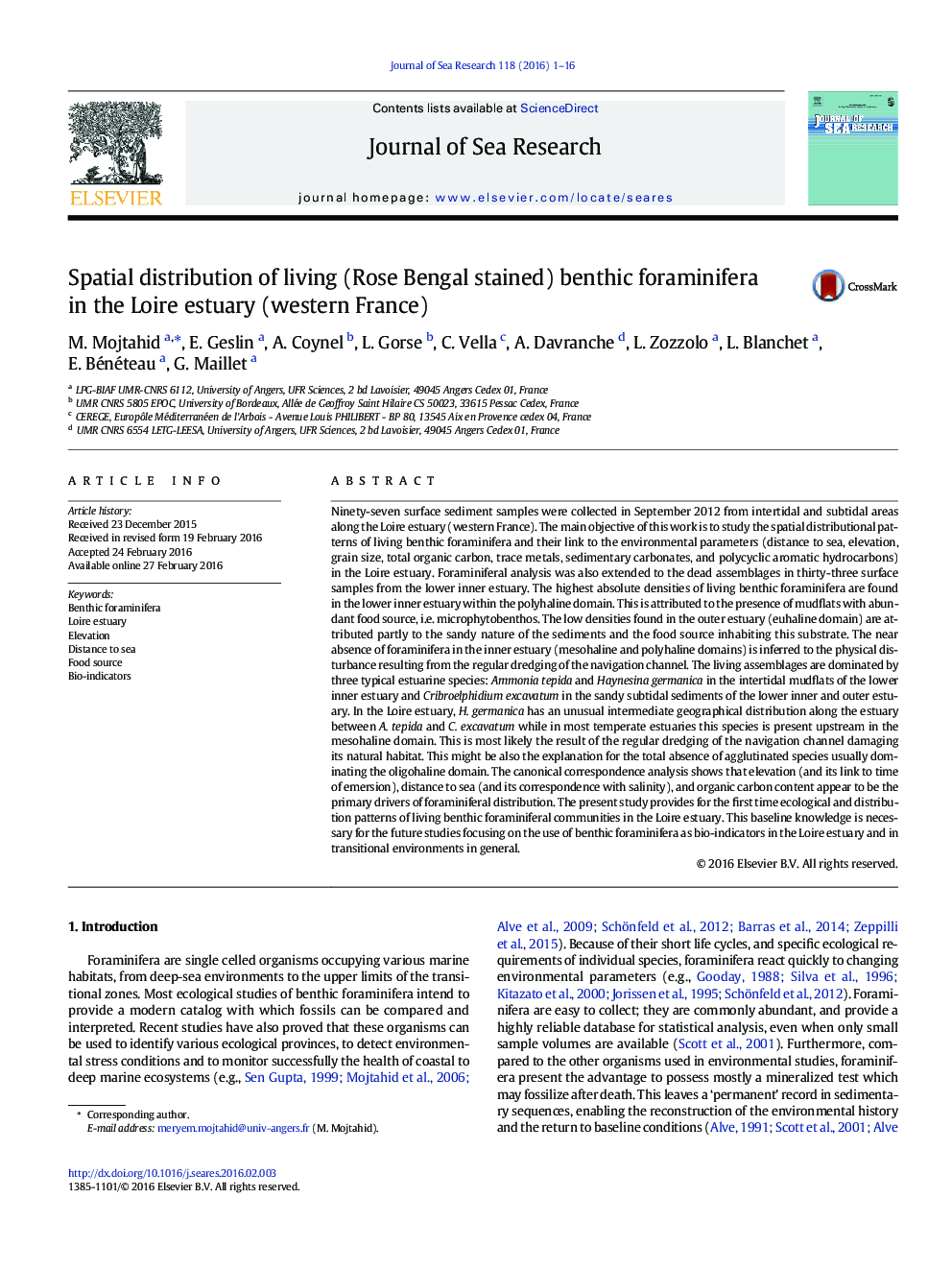| کد مقاله | کد نشریه | سال انتشار | مقاله انگلیسی | نسخه تمام متن |
|---|---|---|---|---|
| 5766117 | 1627457 | 2016 | 16 صفحه PDF | دانلود رایگان |

- We report the first spatial study of living benthic foraminifera in the Loire estuary.
- Faunal density is higher in the intertidal areas.
- Living agglutinated species are totally absent.
- Distance to sea, elevation and food source are determinant for faunal distribution.
- This is the first step towards developing a biotic index in the Loire estuary.
Ninety-seven surface sediment samples were collected in September 2012 from intertidal and subtidal areas along the Loire estuary (western France). The main objective of this work is to study the spatial distributional patterns of living benthic foraminifera and their link to the environmental parameters (distance to sea, elevation, grain size, total organic carbon, trace metals, sedimentary carbonates, and polycyclic aromatic hydrocarbons) in the Loire estuary. Foraminiferal analysis was also extended to the dead assemblages in thirty-three surface samples from the lower inner estuary. The highest absolute densities of living benthic foraminifera are found in the lower inner estuary within the polyhaline domain. This is attributed to the presence of mudflats with abundant food source, i.e. microphytobenthos. The low densities found in the outer estuary (euhaline domain) are attributed partly to the sandy nature of the sediments and the food source inhabiting this substrate. The near absence of foraminifera in the inner estuary (mesohaline and polyhaline domains) is inferred to the physical disturbance resulting from the regular dredging of the navigation channel. The living assemblages are dominated by three typical estuarine species: Ammonia tepida and Haynesina germanica in the intertidal mudflats of the lower inner estuary and Cribroelphidium excavatum in the sandy subtidal sediments of the lower inner and outer estuary. In the Loire estuary, H. germanica has an unusual intermediate geographical distribution along the estuary between A. tepida and C. excavatum while in most temperate estuaries this species is present upstream in the mesohaline domain. This is most likely the result of the regular dredging of the navigation channel damaging its natural habitat. This might be also the explanation for the total absence of agglutinated species usually dominating the oligohaline domain. The canonical correspondence analysis shows that elevation (and its link to time of emersion), distance to sea (and its correspondence with salinity), and organic carbon content appear to be the primary drivers of foraminiferal distribution. The present study provides for the first time ecological and distribution patterns of living benthic foraminiferal communities in the Loire estuary. This baseline knowledge is necessary for the future studies focusing on the use of benthic foraminifera as bio-indicators in the Loire estuary and in transitional environments in general.
Journal: Journal of Sea Research - Volume 118, December 2016, Pages 1-16